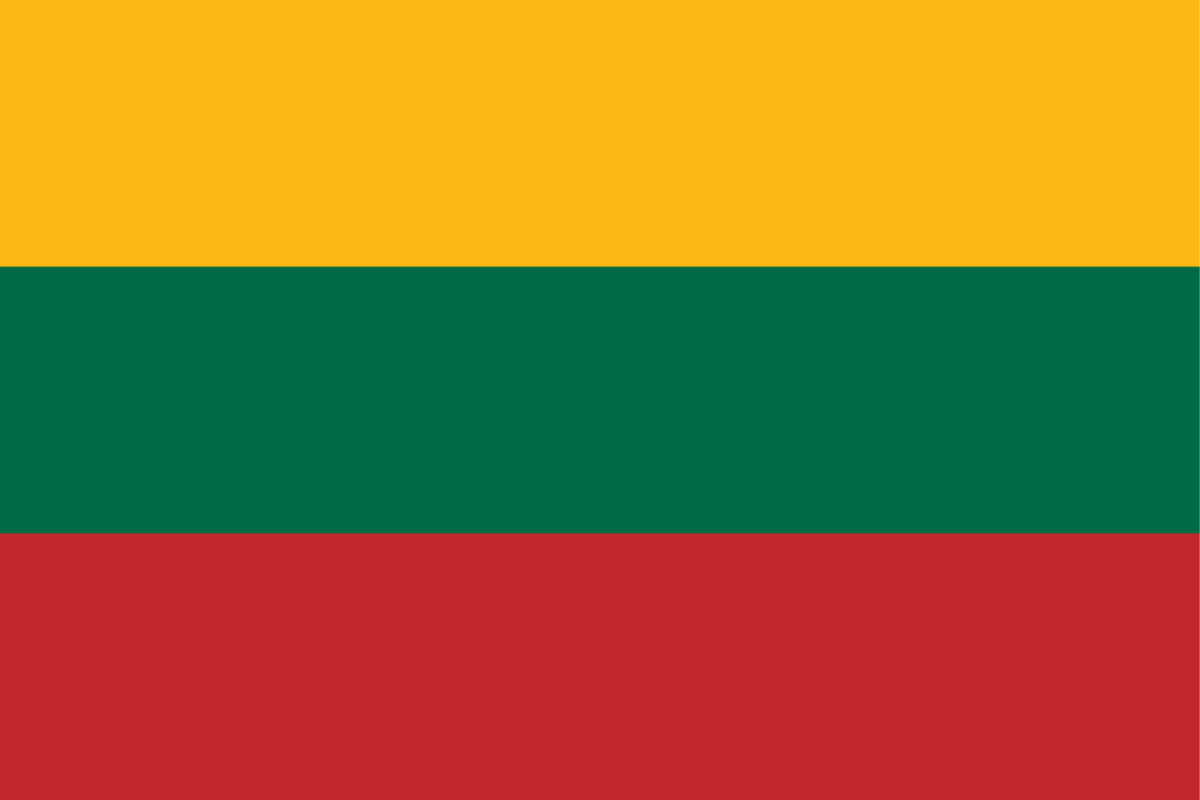The national animal of Lithuania is the white stork. This bird was chosen as the national animal in 1973 and is a vital embodiment of many Lithuanian values and symbols. They are naturally both the national bird and national animal of Lithuania and play an important role in national myth and folklore.
The stork is no doubt a bird you are familiar with from common folklore, and it has an even greater significance in Lithuania.
They are tall, elegant, and among the most well-known birds of their type in the world.
They play an important role in Lithuanian identity today for many reasons, so let’s find out more.

What is the national animal of Lithuania?
The national animal of Lithuania is the white stork.
This is large bird in the stork family, having mostly white plumage with black on the wings.
At maturity, their beaks are long and pointed red, measuring around 39 to 45 inches long.
Their wingspan is around 61 to 85 inches, and they are long distance migrant birds.
They will winter in Africa and even as far as southern Africa, though they seasonally range throughout much of eastern Europe.
The stork was first formally identified by modern naturalism in the 17th Century by English naturalist Francis Willughby.
His description was based on a drawing that was sent to him, and it was first scientifically named Ciconia alba, though today their binomial title is Ciconia ciconia.
With long wings, they are able to soar effortlessly, and they have short, regular flaps in flight.
Their necks will stretch forward as they fly and their legs extend long behind it.
They walk, also, with their neck upstretched, slowly and methodically.
When resting, it will hunch its head between its shoulders.
They seem to molt throughout the year although not many extensive studies have taken place into this phenomenon.
They are gregarious birds, meaning that they live in very large groups.
Sometimes groups in the thousands have been recorded along migration routes and wintering in Africa. Outside of breeding seasons, groups of 40 to 50 individuals have been recorded living in flocks.
Colony nesting has also been recorded and breeding pairs will often gather in small groups for hunting.
Social structure, though, is loosely defined, and there is not usually a strict hierarchy except depending on age.
Cohesion is maintained by altruistic behavior like allopreening, meaning arranging and grooming of one another’s feathers.
Why, then, are they the national animal of Lithuania?
Why is the white stork the national animal of Lithuania?
The white stork is the national animal of Lithuania for a variety of reasons.
On the one hand, they are seen as important symbolically for several reasons.
They embody grace and elegance, yet at the same time quite power and strength.
They are powerful birds and yet also, to our eyes, they are seen as the very pinnacle of natural sophistication.
Birds of this kind, like cranes, often hold this kind of symbolic importance to the people who see them, and this is certainly true of the white stork in Lithuania.
They are vital national symbols for this reason.
But, on a more literal level, they are generally seen as embodiments of Lithuania’s natural beauty.
Though of course they tend to migrate south during Lithuania’s cold winters, this has simply made them also spirits and embodiments of the coming spring and warmer months.
The white stork perfectly encapsulates the natural landscape of Lithuania.
White storks, in any case, embody many different things even to the people within Lithuania.
So, depending on whom you ask, you may find you get a lot of different answers to this question and that they do not embody any one, single value.
Where do white storks live?
White storks live over a wide range, as we’ve seen.
Their breeding range is mostly in Europe and parts of North Africa, though also in parts of Asia.
They tend to breed in eastern Europe and the Middle East, though also in Spain.
They winter in Sub-Saharan Africa as far south as South Africa.
They prefer grassy meadows, farmlands, and shallow wetlands.
They avoid more overgrown areas and certainly will not be found in densely wooded areas.
They prefer more open areas and this is where they will hunt and breed.
This is why they have benefited from deforestation.
What does the white stork eat?
They are carnivorous birds and consume a wide variety of animals.
They prefer to forage in meadows, and their diet will naturally vary by season.
They are very fond of insects and will eat things like beetles, grasshoppers, locusts and crickets, as well as earthworms.
They will also eat things like small reptiles, and amphibians like frogs.
They are also known to catch small mammals like voles, moles and shrews.
Sometimes they are also known to eat bird eggs and younger birds, as well as fish, crustaceans, molluscs and even scorpions.
They are a wide ranging species so naturally they are very well adapted to eating a wide range of prey.
Though a relatively rare sight in Europe generally, the stork is nonetheless one of the most important national symbols in Lithuania.
They are hauntingly beautiful birds and successful conservation efforts have seen their numbers climb over recent decades.
In Lithuania, they are seen as among the nation’s most beautiful birds and wildlife in general, and they play important roles both literally and metaphorically in the landscape and idea of Lithuania.

